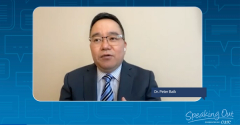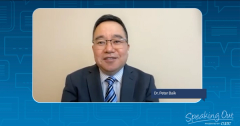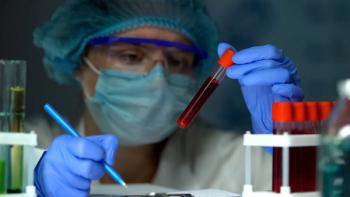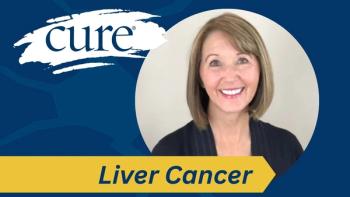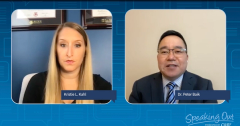
Expert Addresses Disparities in Lung Cancer Screening, What More Can Be Done
As part of its “Speaking Out” video series, Dr. Peter Baik, on behalf of Cancer Treatment Centers of America, discussed disparities seen in lung cancer screening and what more can be done.
Transcription:
This video series featured, Dr. Peter Baik, who is a thoracic surgeon at Cancer Treatment Centers of America® (CTCA) in Phoenix and Chicago, and was moderated by Kristie L. Kahl.
Kahl: Why is lung cancer in particular crucial when it comes to screening and early detection of this disease?
Baik: So the number of patients who die from lung cancer is the highest. And the proportion of patients who die from lung cancer amongst major cancers is the highest. And so we know that when a nodule is found less than 1 centimeter (peripheral early-stage lung cancer), five-year overall survival is greater than 90%. But when it goes to a regional lymph node, not even the localized lymph node, then the five-year survival goes down to 70% to 60%. I mean, there's a huge disparity when it comes to the potential survival.
Kahl: What challenges are we still seeing when it comes to getting people screened for lung cancer?
Baik: So there are multiple challenges when it comes to lung cancer screening. In the United States, our Public Health Services Task Force recommended lung cancer screening with low dose CT, which was about 10 years ago. And the scary thing is that adaptation of those CTS is about 6%, nationally. When you convert that to colon cancer within two, three years, it's more than 50%; for breast cancer, same thing within a year goes from less than 50% to 70 to 80%.
Well, why is the lung cancer screening not as widely adapted? One is definitely understanding that meeting the criteria has gone down. Second thing, is there a cost associated with it? Well, if you have Medicare, most insurance companies cover it or should cover it. And so it's really important to get that screening, but a lot of patients don't know about it. Second thing is there's always denial. “Oh, my uncle Joe smoked for 50 years, and he died right away.” “Oh, they never had any issues.” “We have good genes.” Well, you may have good genes, but you're taking a chance. So there's always that denial and then accessibility.
You get the low dose CT they want. Who's going to manage that? Are you going to see a pulmonologist? Who's getting the report organized? And as we go further away from any testing, life happens, and you may forget. And next, three months goes by, six months goes by and you may have missed that chance of detecting it early. And then the other thing is there's definitely a hurdle when it comes to qualifying for low-dose CT, and to have a shared decision-making conversation. And having that resource is limited. And so especially in underserved areas. I mean, they're already strapped for time. To see physicians or other providers, how are they going to try to get the shared-decision making, and then get the low-dose CT isn't a lot of logistic issues as well. And so this is a problem that many people have written about trying to solve. And there are studies out there that are trying to see how they can improve it. But when health services and President Biden talked about the Cancer Moonshot, their outlook on adaptation of lung cancer screening, a low dose CT is very low. By 2030, they expect adaptation to go up to about 8% to 9%.
Kahl: With that, what are we doing to negate these challenges and what more could we be doing?
Baik: The patient has to be their own advocate. You can't just wait for physicians’ offices to call you. Of course, it takes time to read the CT and get the results. But if you had a low-dose CT, and you don't hear anything about it a week later, find out. If you are not satisfied that things are not being managed, again, second opinion, talk to someone else. You're not a health systems patient, you're your own patient. And you can go anywhere you want.
Kahl: We always talk about patients advocating for themselves and finding their voice. So how can we raise more awareness around lung cancer screening? And do you have any resources or advocacy groups that we could recommend for our patients to join this cause and raise some more awareness around it?
Baik: So the biggest organization is American Lung Association. That's an excellent group, reach out to them. And of course, we are here to answer any questions as well. So you could get on our website and try to get information as much as possible. But the American Lung Association, because being national, it's most widely available, the care managers may have resources as well. And so, there are multiple things that you can do to get the information.
Transcription edited for clarity and conciseness.
For more news on cancer updates, research and education, don’t forget to

